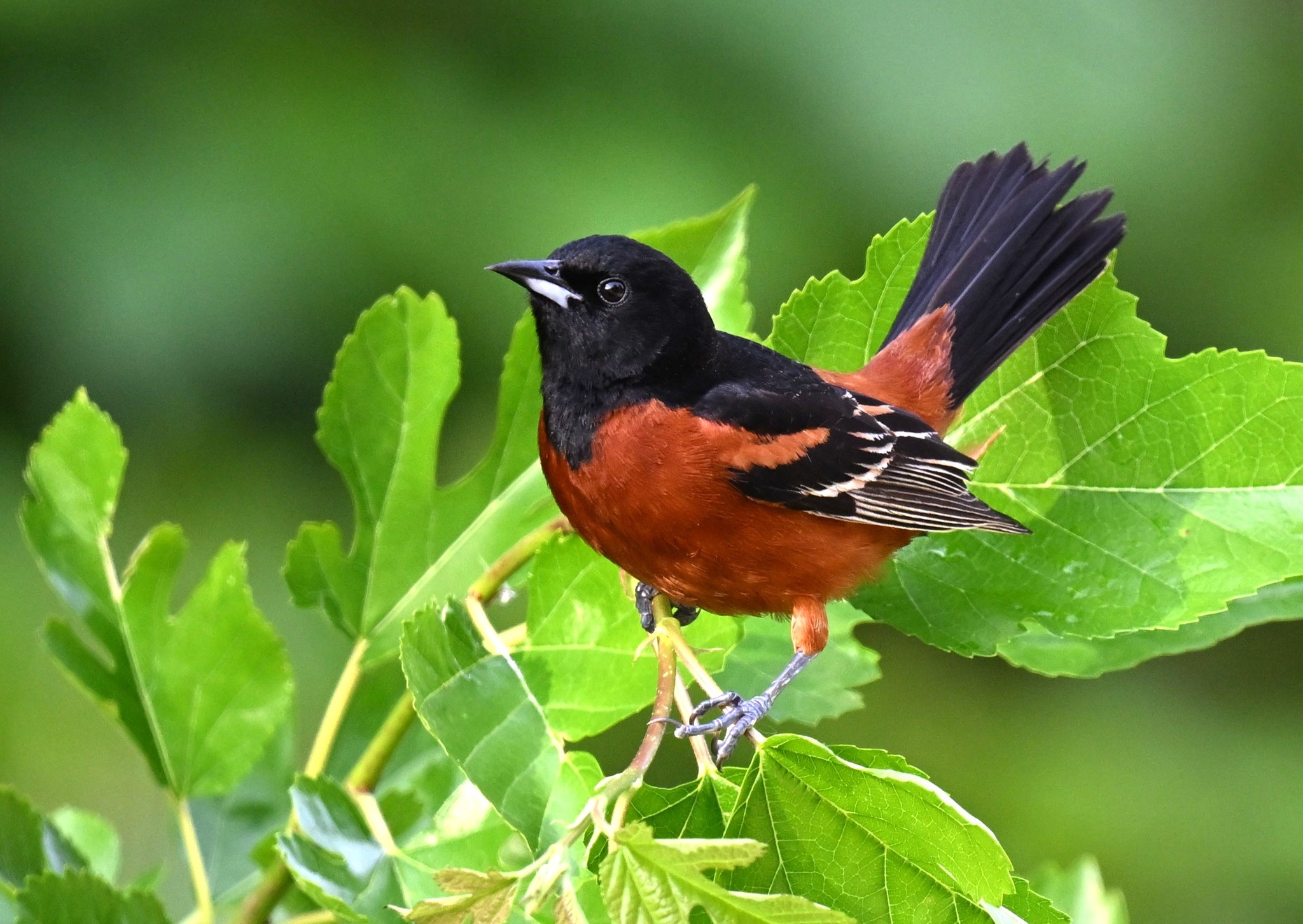The Orchard Oriole (Icterus spurius) is a small, vibrant bird found in the Caribbean and Mexico. The males are easily identifiable by their striking black and chestnut plumage, while females and immature birds display a more subdued yellow-green coloration. These birds are known for their slender bodies and slightly curved bills, which are well-adapted for their feeding habits.

Orchard Orioles inhabit open woodlands, orchards, and gardens where they forage for insects, fruits, and nectar. They are particularly attracted to areas with abundant flowering plants. These orioles are migratory, spending the breeding season in North America before migrating to Mexico, Central America, and the Caribbean for the winter. Their distinctive, sweet songs and chattering calls can often be heard during the breeding season.


During the breeding season, Orchard Orioles build intricately woven nests, often in the outer branches of trees or shrubs. The nests are typically made from grass, plant fibers, and other natural materials, providing a secure place for their eggs. Females lay between 3 to 7 eggs per clutch, and both parents share responsibilities in incubating the eggs and feeding the chicks once they hatch. This cooperative care ensures the survival and growth of their young until they are ready to fledge.



Orchard Orioles play a significant role in their ecosystems by helping control insect populations and pollinating flowers as they feed on nectar. Protecting their habitats and understanding their migratory patterns are essential for ensuring their continued presence in these regions.